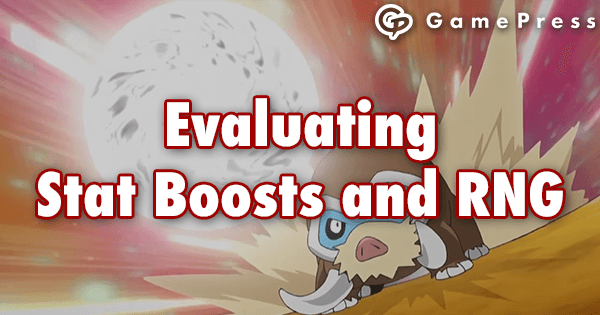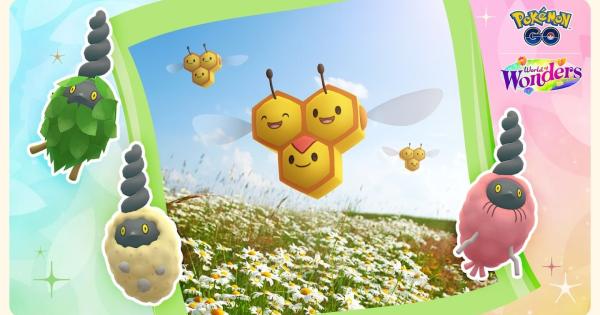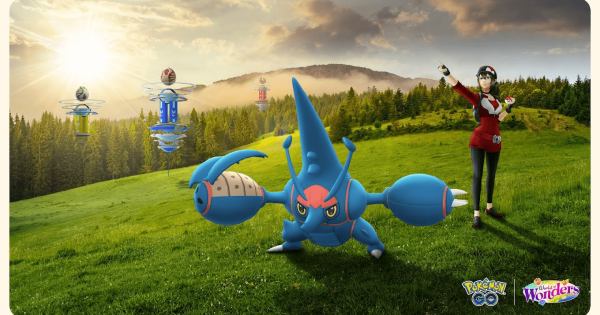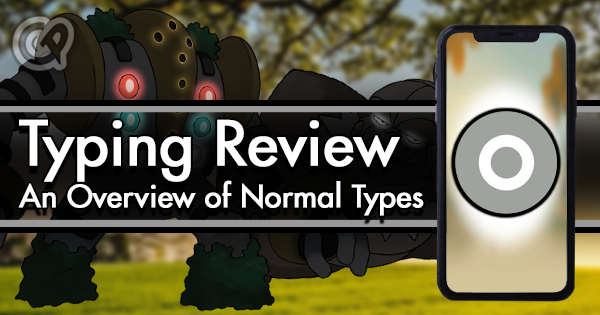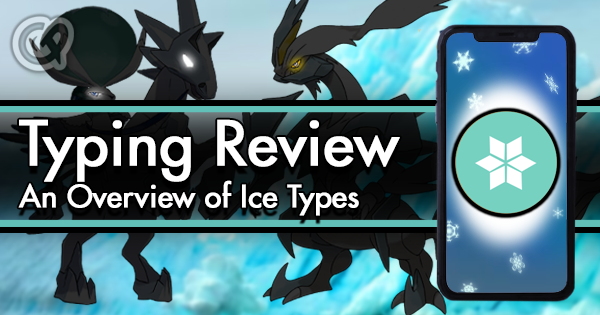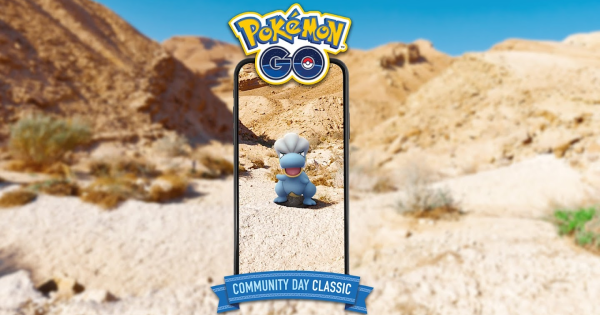Introduction
Pokemon Go’s first move effects arrived with Swinub’s Community Day, featuring the exclusive move; Ancient Power. For the first time ever, 3 moves in the game are more complex than just damage, energy, cooldown, and type. The following moves all have a chance to raise the user’s Attack and Defense;
See which Pokemon can learn these moves by clicking the links to their individual pages.
These moves all have a chance to trigger stat boosts in Trainer Battles only (currently?). These boosts last until the Pokemon affected either faints or switches out. While inconsistent, these buffs can be incredibly powerful. Simulators like our own GoBattleSim can already show the exact impact of these moves in particular matchups. The difference between a buffed and an unbuffed Pokemon is equivalent to the difference between Shiftry and Mewtwo. With an element of added randomness, it can be difficult to decide how to truly view Pokemon with the above buffing moves. This first set of moves only has a 10% chance to trigger and actually impact the battle at all.
This article breaks down how to evaluate these move buffs as well as RNG (random number generation). As Pokemon Go adds more mechanics to the battle system, some of these will undoubtedly bring more random elements into the game. By learning how to appropriately evaluate related statistics and when to make use of random mechanics, we can add an additional level of “skill” to the game.
This article is also available in video/audio form here for those that prefer that type of content.
Buff/Debuff "Stages"
In Pokemon Go, buffs and debuffs are represented in stages, rather than a multiplier.
A flat multiplier is used for other attack bonuses currently in the game. These are multiplicative and stack on top on each other, for each applicable bonus. Resistances and super effectiveness can each be applied multiple times. An “immunity” acts as a double resistance. For context, here are the multipliers that exist in the game.
| Immunity | Resistance | Weather Boost* | STAB | Super Effective |
|---|---|---|---|---|
| x0.390625 | x0.625 | x1.2 | x1.2 | x1.6 |
For Friendship*, only the highest multiplier is added.
| Good | Great | Ultra | Best |
|---|---|---|---|
| x1.03 | x1.05 | x1.07 | x1.1 |
*Weather boost and Friendship are not applicable in Trainer Battles.
For a full breakdown on multipliers see Damage Mechanics and the recent rebalance.
The way boost “stages” works is different. Think of the following table like a board game:
| Start | 1 Boost | 2 Boosts | ||||||
| 50% | 57.15% | 66.67% | 80% | 100% | 125% | 150% | 175% | 200% |
Your game piece starts on 100% then moves up or down on the board based on the different buffs. If it was a true multiplier, one buff would be 125% and an additional x1.25 would bring the total to 156.25%. Instead, these stages are used, which then acts as a multiplier like those above.
The first three boosting moves listed above all increase your attack and defense stats by 2 stages. This means one Silver Wind trigger gives you a 50% attack and defense boost. A 2nd trigger from one of these moves will cap this boost, doubling your initial attack and defense values. Once a Pokemon’s stats have been moved to the fourth boost stage (200%), further boost triggers will not increase your stats.
These bonuses can be quite swingy in battle. A 50% increase to Attack and Defense is the difference in stats between Shiftry and Mewtwo. It’s the largest multiplier other than Super Effectiveness (and noteworthy that a Pokemon like Mewtwo often doesn’t need Super Effectiveness to be a great choice in battle).
Power-Up Punch
The 2019 Battle Showdown introduced the move Power-Up Punch as a Fighing-type move that buffs attack. Each use of Power-Up Punch increases the attack stat one stage as shown in the above chart. Due the the consistent nature of the move, it can just be viewed as a strict buff rather than worrying about how it is affected by RNG. Some of the following principles may still apply.
One of the biggest things that Ancient Power & Co added to the game is the idea that future moves may impact battling in Pokemon Go in dynamic ways. Even a straightforward move like Power-Up Punch bring different decision trees to consider in PvP, leading to a more complex and fun battle system in the future!
So You're Saying There's a Chance
0%
Some players will look at a 10% chance as too low. 10% is lower than it seems. Over the course of a 4-round tournament, you would have to use a boosting move 10 times (likely 3+ battles) to average a single boost for the entire event. While the moves should trigger 1 in every 10 times, it’s not additive. If your move fails to trigger 9 times in a row, it still only has a 10% chance. This can make hoping for these triggers feel like a waste of time. Some players will write these moves off completely either while evaluating or just out of frustration.
Viewing the boost chance as 0% does have its merits though. In many cases, these moves had competitive viability before they were even given the ability to buff stats. If you can find cases where having these moves on your Pokemon is already viable, you can not worry about the trigger chance and be pleasantly surprised when it happens.
5%
The overall buff can be looked at as a 5% boost when considering it is 10% likely to be a 150% multiplier and 90% likely to be 100%. While simulating or testing battles, looking at the move as a flat 5% buff as an average of all battles can give you a realistic expectation of the move’s power level. Importantly, there will be cases where the boosting move is worse, but not by much. This is risk/reward analysis.
| High Reward | Using a boosting move in favor of a better attack (positive outcome) | |
| Low Reward | Not using a boosting move in favor of a better attack (equal outcome) | Using a boosting move in favor of a much better attack (negative outcome) |
| Low Risk | High Risk |
If the difference in battle performance from an aggregate 5% boost outweighs the expected damage from not using a boosting move, rolling for the 10% chance of a boost is the mathematically correct move. Now, there are many other factors to consider. If the non-boosting move is considerably better, stick with the safe plan. The payoff for getting the 50% boost isn’t worth the traction you’ll lose if the boost fails. This may also be particularly important if your other Charge Move can faint the opposing Pokemon.
Risk Perception
Your perception of risk may change over time. Find what risks you feel comfortable with and trust the math while looking for opportunities to take small risks for big gains. Any situations where you'd benefit from a 5% boost should be strongly considered over the "safer" option. Consider too that the boost also applies to defense, meaning it's arguably greater than a 50% buff, also increasing this averaged metric. As we'll touch on later, describing this as just a 150% multiplier is selling it short, even. Still there are mitigations to consider too like damage your Pokemon has already taken, switching, and overall percentage of the battle left to go that can mean the reward is lessened.
When behind, risks may help to gain the upper hand. They may also put you further behind into an unwinnable position.
When ahead, a comfortable position may afford you the liberty to swing and miss. It may also be better to press an advantage and close.
Still, consider the math.
10%
There is a 1 in 10 chance to have your moves trigger. What the buff is isn’t as important as how often it happens. The two outcomes, “yes” and “no” are static results. The question is "Do you win the die roll?" In many scenarios, this is a binary question with a (weighted) binary answer.
In some scenarios, when the trigger happens those 1:10 times, it’s a win. When it doesn’t, it’s a loss. This may be an oversimplification but cases where this is true are common enough. In these cases, the only thing that matters is if the buff happens or not. If this is the case, you’ll win these battles 10% of the time. By how much you win or lose is irrelevant so the buff isn’t really a factor (only that it’s enough).
It is important to treat each case independently. Don't expect to get lucky because you've previously been unlucky. The chance is still 10%. Focus on the present. Also, don't tilt and cloud your judgement, continue to try and make the mathematically correct decision. Frustrations from the 9/10 times there is no buff only make the 1/10 times that much sweeter.
Tip: Boost Against Shields
If your opponent is likely to shield your attack, using your boosting Charged Move is a great option. Since the opposing trainer will shield, you're not giving up any damage by using Ominous Wind. The only cost to using a boosting move here is the energy differential between that and your other option. Importantly, boosting moves still have a 10% chance to buff your Pokemon even when the move is shielded.
19%, 27%, and 34%
While your chances to trigger a boost don’t increase with successive attempts, that’s not totally true. The probability of a buff triggering after N attempts is the following formula.
1 - (.90)^N
When measuring probability over multiple attempts, you calculate the chance of something not happening and subtract that from 100%. This is somewhat contradictory to the concept of focusing on the present but both are true. If your first boost doesn’t trigger, that doesn’t make it any more likely for a future boost to work. As a whole, using a boost twice has a 19% chance to boost at least once (with one of those percents being a case where the boost triggers twice). The chance to receive at least one boost increases to 27% then 34% and so on, following the formula above.
In many examples where boost moves are correct to use, they are correct to do so because the user will get multiple attempts to trigger boosts before fainting. Shields play a huge part in this. A matchup where you’re threatened only by an opposing charge move that is energy intensive means shields can keep you in the battle long enough to roll the die multiple times. Buff moves on tankier and difficult to counter Pokemon essentially offer a higher chance to buff stats, as they’ll survive longer, firing off more charge moves.
50%+
At the end of the day, this is a 50% buff. It should be treated with the respect of a 50% buff. Sometimes, you just need that 50% boost. There are cases where you’re just not going to win unless you get lucky. These cases also exist in the low risk high reward section of the above matrix because you have nothing to lose and everything to gain.
An example here is Giratina with Ancient Power in the Ultra League against a top counter; Steelix. Steelix is going to win this matchup and the only hope for Giratina to win is by randomly getting the 50% boost. As an opposite example to just caring about the trigger chance, here we just care that a 50% boost is possible. Even if the move only had a 1% chance of triggering, that still represents a 1% chance of winning a losing matchup, and it's a chance you would gladly take.
So why the 50% “+”? Thinking about this buff as a 50% doesn’t quite do it justice. The fact that it’s also buffing defense by 50% means these buffs wind up being much more impactful. Not only does this increase TDO and survivability, but this obviously also allows you to fire off more charge attacks.
More charge attacks mean even more chances to use these buffing moves and create an unstoppable Pokemon. [Remember that an additional buff moves you to the final boost “stage” and it cannot increase any higher!] Receiving a buff actually realistically increases your chance to receive additional buffs, as crazy as that may sound.
A double buffed Pokemon is next to impossible to stop. A twice buffed Giratina will slay a Steelix through even a 2-shield disadvantage. While a double buff represents a full 100% boost, we can take this further still, to reach our full potential.
100% NoLucksGiven
Reaching full 100% boosted maximum brain power no lucks given status is about combining all principals and applying them where applicable. While luck and RNG certainly play a factor in all of this, game elements that require knowledge of mechanics and maths and require quick, on-the-fly thinking add skill to the game. The more familiar a master trainer becomes with quickly calculating probabilities and risk/reward analysis, the more that will translate to winning performances.
In summation, consider all of the following principals when evaluating RNG;
- Is the move worthwhile even with no chance of a random boost?
- Does the reward outweigh the risk based on the average outcome?
- Can your perception of risk change?
- Is your judgement focused only on the current situation?
- Will your opponent shield the attack?
- Will probability increase success given multiple attempts in a stalemate?
- Do you need to get lucky?
There will always be detractors of RNG elements in competitive settings, especially in controllable mediums like video games. This can come as quite a shock too when these elements didn’t exist prior to this update. Really though, this shouldn’t be looked at additional RNG. It should be viewed as additional options to make choices.
More choice is always good for competitive players wanted to prove they are the very best. Of course, this randomness is also just more fun for the players looking for fun! These stat boosting moves are the first of exciting things to come for the future of Pokemon Go battling. With more features, more random elements will certainly be added.
More chance, more choice. More luck, more skill.
Don’t be afraid to roll the dice and unleash your full potential in PvP.

